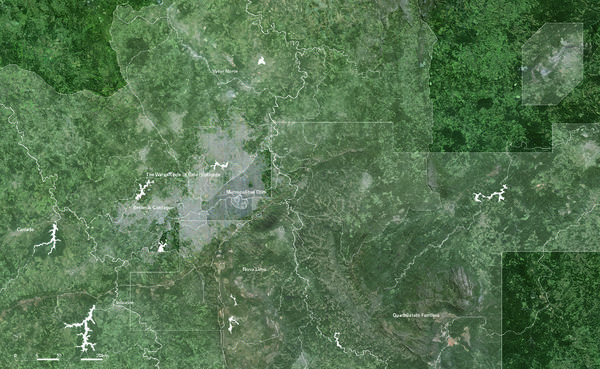Belo Horizonte - Opening a Territory and Making a Capital

The first striking thing about Minas Gerais is the bright red color of the soil, which impregnates the entire landscape. In its ‘original’ nature this land was (and still is) lush green (during the season of heavy rainfall) or timidly yellow (during the four dry months of winter). The soil, as it were, rests under the vegetational surface - therefore when we perceive it, as we do nowadays everywhere in this region, it is because the earth has been scratched - the land overturned, cut into, exploded, ploughed, or shifted. The red soil of Minas Gerais becomes an observational tool of the ongoing processes of man-made physical interventions started over 400 years ago, first by the colonials, and subsequently carried on by the Brazilians (it is difficult to assert, however the practices of the natives - who occupied the land for far longer, and before the arrival of the Portuguese - seem to have in turn been far less consequent with regard to terraforming). So the Minas Gerais that we now see, is the second Minas Gerais, the one of the Cerrado agriculture and pastures, the one of the iron ore and limestone mining, the one of new highways that make slits in the land, the one of ‘condominios’ that resculpt the tops of hills as extensively at times as the process of open pit mining does - the one of a rapidly developing society with a pragmatic and not too shy attitude towards the land.
The study topics compiled attempts to portray the current configuration of a planed capital and its territory.

